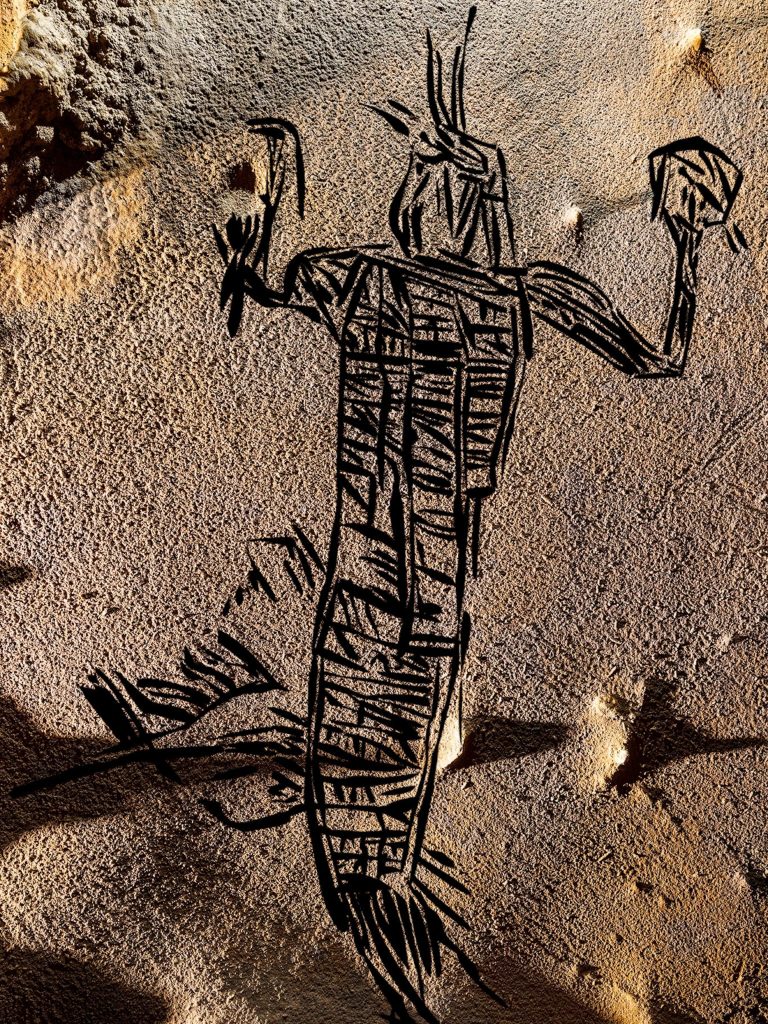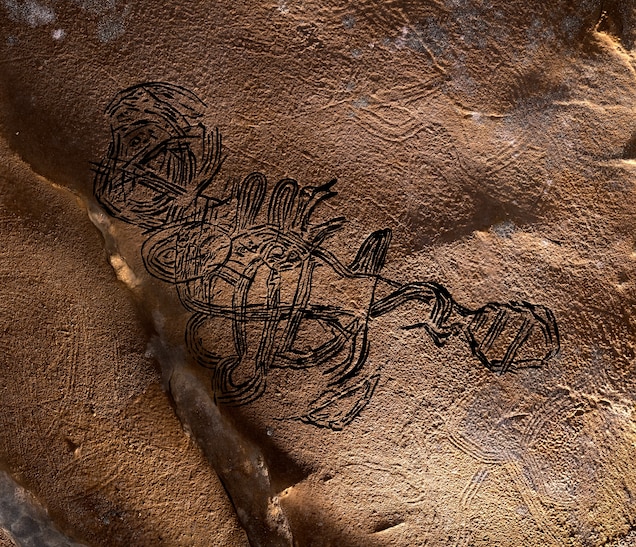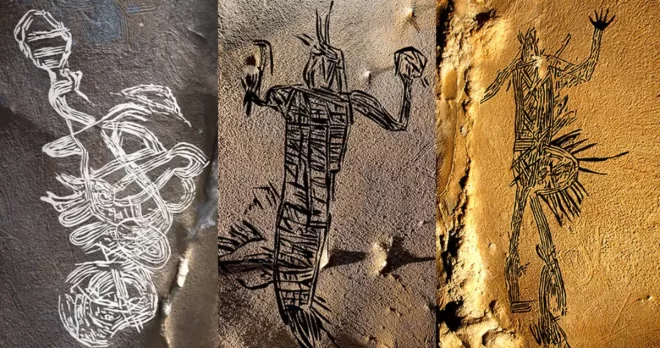A team of scientists has revealed massive Native American mysterious drawings that had been hidden in an Alabama cave for more than 1,000 years. It is the largest known cave art found in North America.
The art was virtually invisible until researchers investigated the cave and used 3D scans to reveal the works, including one 11 feet (3.4 meters) long.
The large artwork was discovered inside Alabama’s 19th Unnamed Cave, which has been kept anonymous to prevent vandalism. Although its location was discovered in 1998, the tight confines of the cave made the sprawling mud art impossible to see, so it went unnoticed. At the time, however, hundreds of smaller images were discovered throughout the cave.
The massive glyphs, which have been dated to the first millennium AD, may depict spirits of the underworld. According to the study, the art was created prior to contact, or before Native Americans encountered outside cultures.
Jan F. Simek, a distinguished professor of science at The University of Tennessee, Knoxville, and a team of researchers discovered the massive mysterious drawings in 2017 while documenting the cave interior.
“We knew the cave contains precontact Native American mud glyphs, and we were carrying out a 3D photogrammetry documentation project to aid with management and conservation,” Simek, lead study author, said. “The very large cave art images cannot be seen in person in the cave because of the constrained spaces on the site.”
Thousands of photos are taken during the photogrammetry process to create a 3D model of something. It not only produced an accurate record of the site, but it also revealed the hidden artwork, which was especially important given the cave’s extremely low ceilings. The team took 16,000 photographs during two months of fieldwork.
The team captured a wide view of the ceiling beyond where sunlight reaches in the cave during the 3D imaging sessions and discovered five previously unknown mysterious drawings.
Enigmatic figures
The use of photogrammetry in this cave and other locations may change how scientists discover and understand Native American cave art, including the intentions and meanings behind the designs.
Using their model, the researchers were able to virtually manipulate the cave ceiling in order to study the glyphs in detail and create digital drawings based on the crosshatching patterns. Four of the works depict human-like figures dressed in elaborate costumes.



The body of one “remarkable human figure” is long, with extended arms and rounded shoulders. According to the researchers, it has a complicated design across the torso made up of different styles of lines, implying a type of garment or regalia. Lines appear to trail behind the figure, resembling a sash, and another appears to show the figure symbolically emerging from the rock.
Another figure has a square head with extending lines from the top, a rectangular torso, and a single leg. Several of the figural depictions feature a torso pattern or sash. One has a triangular head with ovals emerging from either side that resembles “an animal head with pricked ears,” but “clearly human” hands.
A separate figure is made of multiple twisting and curving lines and has a rattlesnake-like tail, but the researchers have no idea what it represents.
The fifth and largest figure appears to be a diamondback rattlesnake with distinct patterns that resemble the eastern diamondback rattlesnake. It is 11 feet long from head to tail (3.4 meters).
The diamondback rattlesnake is the largest rattlesnake in the Americas, and it was sacred to Indigenous peoples in the US Southeast.
The source of inspiration for the figures pictured is unknown.
“As we have not seen their like before, we do not know the identity of these ancient cave art anthropomorphs,” the researchers wrote in the study. “They are not recognisable characters from ethnographically recorded Southeast Native American stories, nor from archaeologically known iconographic materials.”
However, the figures share spiritual elements with other known rock art in the area, such as individuals with supernatural characteristics, suggesting that they may depict characters from “before unknown religious traditions, possibly of the Middle Woodland period” between 200 BC and 600 AD.
The method by which the artwork was created is perhaps the most intriguing aspect. Although the entrance is 32.8 feet (10 meters) high and 49.2 feet (15 meters) wide, the art chamber has a low ceiling only 1.9 feet (0.6 meters) above the cave floor. This means that whoever created the art had to crouch or crawl through the chamber, and the mysterious drawings can only be seen by lying on the cave floor.



“They are so large that the makers had to create the images without being able to see them in their entirety,” the researchers wrote. “Thus, the makers worked from their imaginations, rather than from an unimpeded visual perspective.”
Symbolism that is hidden in mysterious drawings
The artwork was created at a time when Indigenous communities were transitioning from foragers to farmers and constructing long-term settlements.
These tribes used their surroundings to honor their religious and spiritual beliefs, erecting mounds as passageways for spirits to the upper world and carving caves as sacred spaces that served as passageways to the underworld.
“We know that Native Americans modified their landscapes on very large scales in order to connect the living with the natural and supernatural worlds and to the varied elements of those worlds,” the researchers noted in the study. “The large figures drawn in 19th Unnamed Cave therefore probably represent spirits of the underworld, their power and importance expressed in their shape, size and context. They were elements in the broader sacred spiritual landscape of pre-contact Native Americans.”
While this work is similar to large open-air rock art found in Utah and other parts of North America, such large drawings hidden away in a cave are unusual, which is why their presence was completely “unsuspected.”
The first North American cave art, dating from 750 to 800 years ago, was discovered in Tennessee in 1979. Since then, 89 additional sites have been discovered across southeastern North America. The oldest site is 7,000 years old, but the majority of the cave art was created between 800 and 1600 AD.
Although the 19th Unnamed Cave has been extensively studied, researchers believe they are only just getting started because these cave mysterious drawings were previously overlooked. However, the cave has over 3.1 miles (5 kilometers) of underground passages.
“(The) 19th Unnamed Cave is the richest of all known cave art sites in south-eastern North America,” the researchers said.
“These images are different than most of the ancient art so far observed in the American Southeast and suggest that our understanding of that art may be based on incomplete data,” Simek said.
Source: CNN
